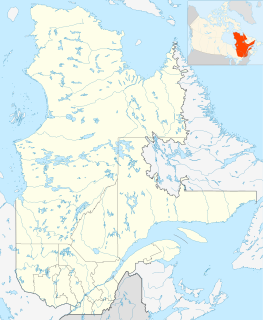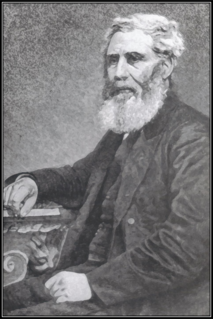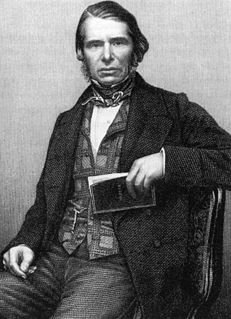 W
WThe Great Famine, also known as the Great Hunger, the Famine or the Irish Potato Famine, was a period of mass starvation and disease in Ireland from 1845 to 1852. With the most severely affected areas in the west and south of Ireland, where the Irish language was dominant, the period was contemporaneously known in Irish as an Drochshaol, loosely translated as "the hard times". The worst year of the period was 1847, known as "Black '47". During the Great Hunger, about 1 million people died and more than a million fled the country, causing the country's population to fall by 20%–25%, in some towns falling as much as 67% between 1841 and 1851. Between 1845 and 1855, no fewer than 2.1 million people left Ireland, primarily on packet ships but also steamboats and barks—one of the greatest mass exoduses from a single island in history.
 W
WThe Ballinlass incident was the eviction of 300 tenants on 13 March 1846 in Ireland, in the context of the Great Famine in Ireland (1845–1849).
 W
WBlack '47 is a 2018 Irish period drama film directed by Lance Daly. The screenplay is by PJ Dillon, Pierce Ryan, Eugene O'Brien and Lance Daly, based on the Irish-language short film An Ranger, written and directed by Dillon and Ryan. The film stars Hugo Weaving, James Frecheville, Jim Broadbent, Stephen Rea, Freddie Fox, Barry Keoghan, Moe Dunford, and Sarah Greene. Set in Ireland during the Great Famine, the film follows an Irish Ranger who has been fighting for the British Army abroad, as he abandons his post to reunite with his family. The title is taken from the most devastating year of the famine, 1847, which is referred to as "Black '47".
 W
WCastle Richmond is the third of five novels set in Ireland by Anthony Trollope. Castle Richmond was written between 4 August 1859 and 31 March 1860, and was published in three volumes on 10 May 1860. It was his tenth novel. Trollope signed the contract for the novel on 2 August 1859. He received £600, £200 more than the payment for his previous novel, The Bertrams, reflecting his growing popular success.
 W
WThe chronology of the Great Famine documents a period of Irish history between 29 November 1845 and 1852 during which time the population of Ireland was reduced by 20 to 25 percent. The proximate cause was famine resulting from a potato disease commonly known as late blight. Although blight ravaged potato crops throughout Europe during the 1840s, the impact and human cost in Ireland – where a third of the population was entirely dependent on the potato for food but which also produced an abundance of other food – was exacerbated by a host of political, social and economic factors which remain the subject of historical debate.
 W
WA coffin ship was any of the ships that carried Irish immigrants escaping the Great Irish Famine and Highlanders displaced by the Highland Clearances.
 W
WThe Corn Laws were tariffs and other trade restrictions on imported food and corn enforced in the United Kingdom between 1815 and 1846. The word corn in British English denotes all cereal grains, including wheat, oats and barley. They were designed to keep corn prices high to favour domestic producers, and represented British mercantilism. The Corn Laws blocked the import of cheap corn, initially by simply forbidding importation below a set price, and later by imposing steep import duties, making it too expensive to import it from abroad, even when food supplies were short.
 W
WDeath or Canada is a two-part Canadian–Irish docudrama which was broadcast in Ireland on RTÉ One in November/December 2008. In the UK on The History Channel UK in January and February 2009 as Fleeing The Famine. The film was also featured as part of the celebrations for Toronto's 175th anniversary.
 W
WThe Doolough Tragedy is an event that took place during the Great Irish Famine close to Doo Lough in southwest County Mayo.
 W
WFamine is a novel by Irish writer Liam O'Flaherty published in 1937. Set in the fictionally named Black Valley in the west of Ireland during the Great Famine of the 1840s, the novel tells the story of three generations of the Kilmartin family. The novel is critical of the constitutional politics of Daniel O'Connell, which are depicted as laying the oppressed Irish of the 19th century open to the famine that would destroy their society.
 W
WThe Famine Memorial officially simply titled Famine is a memorial in Dublin, Ireland. The memorial, which stands on Customs House Quays is in remembrance of the Great Famine (1845-1849), which saw the population of the country halved through death and emigration.
 W
WThe Famine Memorial Fountain is a memorial to the Great Famine in Mullingar, Ireland. The memorial stands in a public square at an intersection between Dominick Street and Oliver Plunkett street.
 W
WA pest house, plague house, pesthouse or fever shed was a type of building used for persons afflicted with communicable diseases such as tuberculosis, cholera, smallpox or typhus. Often used for forcible quarantine, many towns and cities had one or more pesthouses accompanied by a cemetery or a waste pond nearby for disposal of the dead.
 W
WFrederick Douglass and the White Negro is a documentary telling the story of ex-slave, abolitionist, writer and politician Frederick Douglass and his escape to Ireland from America in the 1840s.
 W
WThe Great Hunger is a 1962 book about the Great Famine in Ireland in 1845–1849 by British historian Cecil Woodham-Smith. It was published by Harper and Row and Penguin Books.
 W
WGreener Grass, published in 2009, is the second novel of Canadian author Caroline Pignat. The story revolves around a 14-year-old girl, Kit Byrne, living during the Great Famine of 1847 in Ireland. The Byrne family faces imminent eviction when their landlord, Lord Fraser, wants to repossess their land. He attempts to drive them out by raising the rent and having his estate manager, Lynch, set fires in the surrounding area. Kit works as a kitchen maid in the main house, but when she loses her job her mother is forced to sell precious family heirlooms and furniture. With her father dead, she must fight for survival and help her ailing mother and siblings escape Ireland for good.
 W
WGrosse Isle is an island located in the St. Lawrence River in Quebec, Canada. It is one of the islands of the 21-island Isle-aux-Grues archipelago. It is part of the municipality of Saint-Antoine-de-l'Isle-aux-Grues, located in the Chaudière-Appalaches region of the province.
 W
WThe Hanging Gale is a four-episode television serial which first aired on RTÉ One (Ireland) and BBC1 (UK) in 1995. The series was a British–Irish co-production, made by Little Bird Films for BBC Northern Ireland in association with Raidió Teilifís Éireann, with support from the Irish Film Board.
 W
WIreland Park is located on the shores of Lake Ontario on Éireann Quay, adjoining the Canada Malting Silos, at the foot of Bathurst Street in Toronto, Ontario, Canada. Officially opened in the summer of 2007, Ireland Park commemorates the tens of thousands who fled Ireland during the Great Famine. In 1847, over 38,000 Irish men, women and children landed at Rees's Wharf on the shores of Toronto, fleeing famine and eager to start a new life. Although Toronto only had approximately 20,000 residents at the time, the city welcomed the newcomers with open arms. Over 1,100 new immigrants did not survive to make Canada their new home, with many perishing in fever sheds during the Typhus epidemic of 1847. Ireland Park is a tribute to all the Irish ancestors who came with only hope, for a new life in a promising country.
 W
WThe Irish Commemorative Stone is a monument in Pointe-Saint-Charles, island of Montreal, Quebec commemorating the deaths from "ship fever" (typhoid) of 6,000 mostly Irish immigrants to Canada during the immigration following the Great Irish Famine in 1847-48. It is a 30-tonne, 10-foot high boulder.
 W
WThe Irish Famine Memorial, also known as the Irish Famine Monument, is installed in Cambridge Common, in Cambridge, Massachusetts, United States. The monument was designed by Maurice Harrow, and dedicated by Ireland President Mary Robinson in July 1997.
 W
WThe Irish Famine is a book written by Diarmaid Ferriter and Colm Tóibín. The book is in two volumes, the first of which was written and originally published by Tóibín in 1999. The second volume, written by Ferriter, is entitled The Capricious Growth of a Single Root and was added in 2001.
 W
WThe Irish Hunger Memorial is a 0.5-acre (0.20 ha) park at the corner of Vesey Street and North End Avenue in the Battery Park City neighborhood of Manhattan in New York City. The memorial is dedicated to raising awareness of the Great Irish Hunger, referred to as An Gorta Mór in Irish, in which over one million starved to death between 1845 and 1852 as a result of British policies that prioritized the exportation of profitable foods as most of the potato crop was wiped out by a fungus-like organism called Phytophthora infestans.
 W
WJeanie Johnston is a replica of a three masted barque that was originally built in Quebec, Canada, in 1847 by the Scottish-born shipbuilder John Munn. The replica Jeanie Johnston performs a number of functions: an ocean-going sail training vessel at sea and in port converts into a living history museum on 19th century emigration and, in the evenings, is used as a corporate event venue.
 W
WThe legacy of the Great Famine in Ireland followed a catastrophic period of Irish history between 1845 and 1852 during which time the population of Ireland was reduced by 50 percent.
 W
WEdward Nangle was a Church of Ireland minister and the founder of the Achill Mission Colony. He established a Protestant mission on Achill Island, County Mayo, in 1834 and worked there for eighteen years with the aim of bringing Protestantism to the Native Irish Christians who were impoverished in large part due to the colonial policies of the Protestant Ascendancy. Edward Nangle was involved in evangelical attempts to convert Catholics to Protestantism. He opened a Christian school on the island where children were taught reading, writing, agricultural skills and Christianity as part of a Missionary Colony.
 W
WThe National Irish Famine Museum is a museum located at Strokestown Park, Roscommon, Ireland. The museum contains records from the time of Ireland's Great Famine of 1845–1852. The museum was built by the Westward Group and all the documents on display in the museum are from the estate. The exhibit aims to explain the Great Irish Famine and to draw parallels with the occurrence of famine in the world today.
 W
WNewtown was a residential area of Cardiff, Wales that was also known as 'Little Ireland' because of its population of Irish families. Its six streets and 200 houses existed from the mid-nineteenth century until they were demolished in 1970. It was known as one of the "5 towns of Cardiff", the others being Butetown, Crockherbtown, Grangetown and Temperance Town.
 W
WThe Oregon Irish Famine Memorial is a memorial in Portland, Oregon's Mount Calvary Cemetery, in the United States. The 7-ton, 14-foot sculpture was designed by Brendan McGloin and dedicated in 2008. It features a sandstone cross with an Irish limestone base on a concrete foundation.
 W
WPraedecessores nostros was a papal encyclical written by Pope Pius IX on March 25, 1847, to address the crisis of the Great Irish Famine that occurred approximately between 1845 and 1850. This event is known by many as the 19th century’s greatest natural disaster. Pope Pius IX was born Giovanni Maria Mastai-Ferretti on May 13, 1792, in Senigallia, Italy. He studied at the College of Volterra in Tuscany and was ordained as a priest in 1819. Throughout the span of his life, Pope Pius IX served as the director of the Roman hospice of San Michele, Bishop of Imola, and Archbishop of Spoleto. He was made a Cardinal in 1840 and elected Pope in 1846. Several important events that occurred during the papacy of Pius IX are the unification of Italy, the First Vatican Council, the defining of the dogma of the Immaculate Conception, and 38 papal encyclicals. Praedecessores nostros is one of the more significant papal decrees of the time because it addresses one of the most well known events in history. The Great Irish Famine was caused by the mysterious fungus, Phytophthora infestans. The fact that the potato was the staple food of over half the population of Ireland caused approximately one million people to die as a consequence.
 W
WStar of the Sea is a historical novel by the Irish writer Joseph O'Connor published in 2004. The novel is set in 1847 against the backdrop of the Irish famine. Star of the Sea became an international number one bestseller, selling more than 800,000 copies in a year.
 W
WSir Charles Edward Trevelyan, 1st Baronet, was a British civil servant and colonial administrator. As a young man, he worked with the colonial government in Calcutta, India. He returned to Britain and took up the post of Assistant Secretary to the Treasury. During this time he was responsible for facilitating the government's inadequate response to the Irish famine. In the late 1850s and 1860s he served there in senior-level appointments. Trevelyan was instrumental in the process of reforming the British Civil Service in the 1850s.
 W
WUnder the Hawthorn Tree is a children's historical novel by Marita Conlon-McKenna, the first in her Children of the Famine trilogy set at the time of the Great Famine in Ireland. It was published by the O'Brien Press in May 1990. It was adapted for television in 1999.
 W
WThe Western New York Irish Famine Memorial is a memorial to The Great Famine. Situated on La Riviere Street along the waterfront in Buffalo, New York, it was dedicated in 1997. It was designed by Rob Ferguson and was erected by the Western New York Famine Commemoration Committee. The memorial consists of a central piece of granite. At its base there is an inscription of Luke 19:40 in Irish. The stone is situated in a well, meant to represent "The Great Silence," during which time very few people were willing to speak about the famine. Along its outer ring are 32 boulders, meant to represent the 32 counties of Ireland. There are also stones inscribed with the names of those who survived the Famine. Some stones are left blank, representing the unknown dead.
 W
WThe Young Irelander Rebellion was a failed Irish nationalist uprising led by the Young Ireland movement, part of the wider Revolutions of 1848 that affected most of Europe. It took place on 29 July 1848 at Farranrory, a small settlement about 4.3 km north-northeast of the village of Ballingarry, South Tipperary. After being chased by a force of Young Irelanders and their supporters, an Irish Constabulary unit took refuge in a house and held those inside as hostages. A several-hour gunfight followed, but the rebels fled after a large group of police reinforcements arrived.